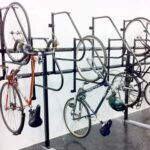A clothing store simulator helps you with cost-effective planning by allowing you to experiment with different designs and layouts without the need for costly physical changes to your store. Here’s how:
- Virtual Environment: The simulator creates a virtual environment where you can experiment with store layouts, decor, and displays without making any physical changes to your actual store.
- No Need for Physical Prototyping: You can test different design concepts and ideas virtually, eliminating the need for expensive physical prototypes or mock-ups.
- Cost Savings: By using a simulator, you can avoid the costs associated with hiring designers, contractors, and architects to make changes to your store layout and design.
- Reduced Risk of Mistakes: Experimenting with different design options in a virtual environment helps minimize the risk of costly mistakes that may occur with traditional trial-and-error methods.
- Quick Iterations: The simulator allows you to quickly iterate and refine your store design, saving time and money compared to traditional design methods.
- Optimized Use of Space: You can optimize your store layout to make the most efficient use of available space, reducing the need for costly renovations or expansions.
- Realistic Cost Estimates: Some simulators provide cost estimation tools that allow you to calculate the cost of implementing different design options, helping you stay within budget.
- Resource Optimization: Experiment with different design elements, such as lighting, fixtures, and displays, to find the most cost-effective solutions that still meet your design goals.
- Remote Collaboration: Collaborate with designers, colleagues, and stakeholders remotely, saving time and travel expenses associated with in-person meetings.
- Scalability: The simulator allows you to test and refine store designs for multiple locations, ensuring consistency across your brand while minimizing costs.
By providing a cost-effective way to plan and design your store layout, decor, and displays, a clothing store simulator helps you create an engaging and visually appealing shopping environment while staying within budget.
How Does a Clothing Store Simulator Help You with Real-Time Feedback?
A clothing store simulator such as a dress shop helps you gather real-time feedback on your store design from customers or colleagues in the following ways:
- Virtual Walkthroughs: You can take virtual walkthroughs of your store design and share them with others to gather feedback on different aspects of the layout, decor, and display.
- Interactive Collaboration: The simulator allows for interactive collaboration, enabling multiple users to view and comment on the store design in real-time, regardless of their location.
- Commenting and Annotation Tools: Users can use commenting and annotation tools to provide specific feedback on different design elements, making it easy to identify areas for improvement.
- Live Presentations: Present your store design to stakeholders or decision-makers in real-time, allowing them to provide feedback and suggestions as you walk them through the design.
- A/B Testing: Experiment with different design options and layouts and gather feedback from customers or colleagues to determine which design performs best in terms of customer engagement and satisfaction.
- Survey Integration: Some simulators allow you to integrate surveys and polls directly into the virtual environment, allowing you to gather feedback from customers who interact with the simulated store design.
- Social Media Sharing: Share screenshots or videos of your store design on social media platforms to gather feedback from a wider audience of potential customers and industry professionals.
- Instant Messaging: Use built-in instant messaging features to communicate with colleagues and stakeholders in real-time, discussing design ideas and gathering feedback as you work on the store design.
- Data Analytics: Some simulators provide data analytics tools that allow you to track customer interactions with the simulated store design, providing valuable insights into customer behavior and preferences.
- Iterative Design Process: Use real-time feedback to make iterative improvements to your store design, refining and optimizing the layout, decor, and display based on customer and stakeholder input.
By providing real-time feedback tools and features, a clothing store simulator allows you to gather input from customers, colleagues, and stakeholders throughout the design process, ensuring that your store design meets the needs and expectations of your target audience.











